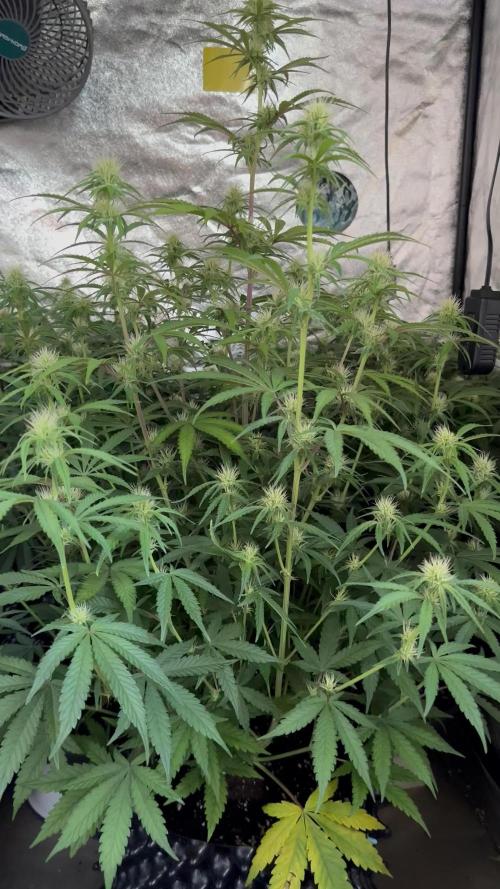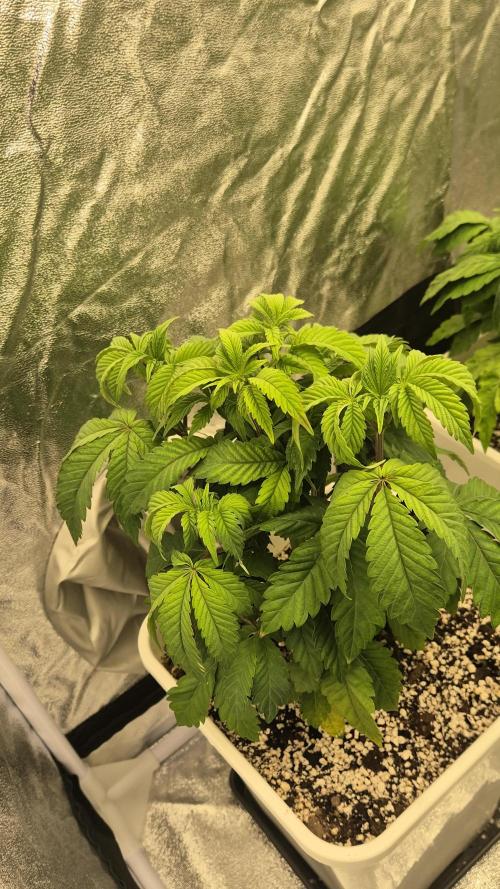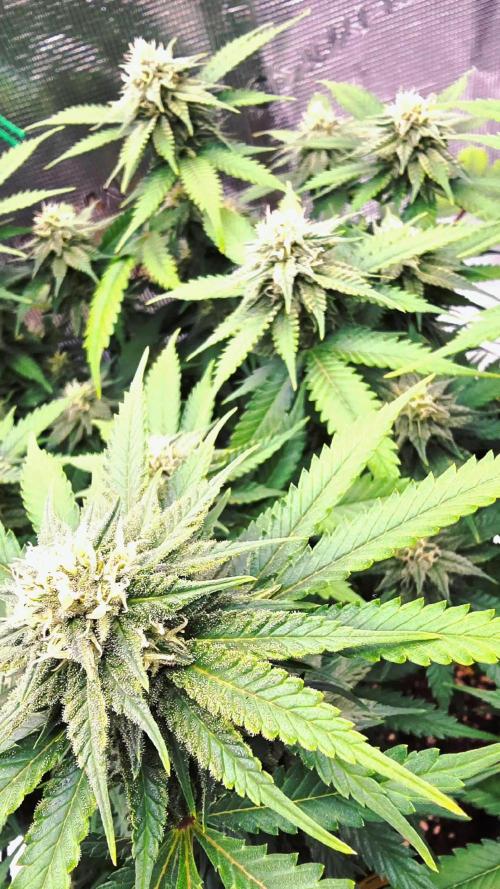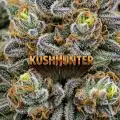The Grow Awards 2026 🏆 





























Likes
Comments
Share


@CampaCavallo
Follow
È stato un vero piacere pulire questa Femmina di CRITICAL LEMON ⚡🍋
ha prodotto una brlla quantità di pannocchie resinose e profumate!
Ringrazio ancora Tent-X 🤖 che ci ha accompagnato in questa esperienza 🔝 lo consiglio a tutti i grower con grandi esigenze produttive! Con TENT-X di TROLMASTER 🤖, vai come un PRO👍🏻❤️
Likes
5
Share


@MalinaGrow
Follow
Soaked the seeds in water with hydrogen peroxide 10 drops per 200 ml. GHS gave root first both varieties, CG waited 3 days and decided to add a second seed, after 24 hours both gave root :)
Solucion - local Argentinian manufacturer.
Coconut substrate - Plagron.
Water : 110 ppm + 0.5 (HV+HM+HM)=350 ppm.
Wanted to twist the sprout with a Lemon Orange spiral because it stretched out, but broke it in half :(
26.06 - 2 Marshmallow and Milky Dreams.
P.S. the biggest one is Milky Dreams.
Puse las semillas en remojo en agua con peróxido de hidrógeno 10 gotas por 200 ml. GHS dio raíz primero ambas variedades, CG esperó 3 días y decidió añadir una segunda semilla, después de 24 horas ambos dieron raíz :).
Solucion - productor local argentino.
Sustrato de coco - Plagron.
Agua : 110 ppm + 0,5 (HV+HM+HM)=350 ppm.
Quise retorcer el brote con una espiral de Naranja Limón porque se estiraba, pero lo rompí por la mitad :(
2 Marshmallow y Milky Dreams.
PD: el más grande es Milky Dreams.
Замачивал семена в воде с перекисью водорода 10 капель на 200 мл. GHS дал корень первым оба сорта, CG ждал 3 дня и решил добавить вторую семечку, через сутки оба дали корень :)
Solucion - местный Аргентинский производитель.
Кокосовый субстрат - Plagron.
Вода : 110 ppm + 0.5 ( HV+HM+HM)=350 ppm
Хотел скрутить росток спиралью Лемон Оранж, потому что он вытянулся, но сломал его пополам :(
2 Marshmallow и Milky Dreams
P.S. самый большой это Milky Dreams
Likes
8
Share


@madlangs
Follow
All going well apart from giving them slight tip burn with there treats. Nothing to worry about, they are being pushed hard
11.1.25
Strawberry nuggets 50cm
Gorilla 67cm
Smoothie 71cm
11.1.25
Turn lights to 16/6 to keep dli around 35
Likes
Comments
Share


@senya_grow
Follow
A scent that’s impossible to describe — it’s like sweet bubble gum with a hint of wine. Pure beauty!
Processing
Likes
24
Share


@MadeInGermany
Follow
Hey everyone ☺️.
This week the food was increased to 4 ml per liter of water, as they can still tolerate a little more.
I'm curious how it will develop this week.
Otherwise there is not really anything to tell this week ☺️.
Stay healthy 🙏🏻 and let it grow 🌱
You can buy this Strain at
https://www.amsterdamgenetics.com/product/kosher-tangie-kush/
You can buy this Nutrients at
https://greenbuzzliquids.com/
Type:
Kosher Tangie Kush
☝️🏼
Genetics:
Kosher Kush
X
Tangie
👍
Vega lamp:
2 x Todogrow Led
Quantum Board 100 W
💡
Bloom Lamp :
2 x Todogrow Led
Cxb 3590 COB 3500 K 205W
💡💡☝️🏼
Soil :
Canna Coco Professional +
☝️🏼
Fertilizer:
Green Buzz Liquids :
Organic Grow Liquid
Organic Bloom Liquid
Organic more PK
More Roots
Fast Buds
Humic Acid Plus
Growzyme Big Fruits
Clean Fruits
Cal / Mag
Organic Ph - Pulver
☝️🏼🌱
Water:
Osmosis water mixed with normal water (24 hours stale that the chlorine evaporates) to 0.2 - 0.4 EC. Add Cal / Mag 2 ml per l water every 2 waterings . Ph with Organic Ph - Pulver to 5.8 .
Likes
2
Share


@Ese_muchach0
Follow
Greetings one and all, welcome back to my garden.
Another week and STACKING is the operative word. I’m seeing some more potential in the last few weeks for this San Francisco sourdough.
I’ve gone in a couple times, removing larf and umbrella leaves to get that extra bit of light through the plant.
Impressive results thus far from the Shogun Nutrients range. She seems to be thriving, showing no symptoms or negative signs since day one.
I should have added PATIENCE to the list of operative words…
Likes
22
Share


@herbalistssword
Follow
Good week, buds are swelling up and girls getting taller.
Fastberry day 52: still getting talled standing at 71 cms (grew by 5cms since last week), sowing some signs of over feeding so today I gave her a weeker feed with 2ml/l of biogrow and 1ml/l calmag only. She is growing to become a very beautiful girl.
Sugar Mama day 56: I was started to worry that this girl is a photoperiod and making plans for her and cloning. This week standing at 22cms she is finally starting to flower. She had a bad childhood resulting in slow development hopefully it doesn't come with small buds and just delayed the process. I defoliated her again the beginning of the week (I lost count at this point, I think this was the 3rd defoliation in 3 weeks)
Candy Kush #1 day 56: Buds are swelling up, grew to 29cms from 24cms last week, she also showed signs of overfeeding so got same weeker feed as the fastberry.
Candy Kush #2 day 56: Standing at 66cms, didn't get any taller by buds are swelling up nicely trichomes are mostly smokey white but I'll leave these girls longer to swell them up more and have some more stoney effect plants. Won't be long now, maybe 3 weeks. There is some sort of feeding issue with this plant, she never looked 100% healthy to me.
Bubble Kush day 52: standing at 82cms, hasn't gotten taller but the buds are getting fatter and she looks amazing. Taking all the nutrients well and looking really nice. Did I mention she is my favorite of the lot? I've already bought me some RQS Huckleberry auto and RQS Northern Lights auto. They will go into my next grow :D
I've been defoliating here and there as I go along and watering by top watering a little and then mostly bottom feeding by watering the saucers and making sure all of it is sucked up and pot isn't sitting in water.
Thanks for reading and happy growing
Likes
7
Share


@Meksi2790
Follow
nice and clean down below so the energy can focus on the top maintaining the same temperatures will start lowering next week to start bringing out the purple
Likes
10
Share


@YAKDADDYDWC
Follow
started this week off by changing it to 12/12 lighting once i see her start to bud i will change bulbs... will keep updated
Likes
29
Share


@gottagrowsometime
Follow
Welcome to my 🍋 🌳 diary. This is for the tiny/rare pot seedsman contest.
I have a .75ml cannacure bottle. Have a drainage hole at the end. And have it filled with light mix. Also, as I know its gonna be hard for the plant roots to breath I added my air pump I use for both my DWC buckets. I just made a hole and pushed the tube through a tight hole I made. So, o2/co2 will go straight into this mini little rare pot. Seed has been planted into the sub. I added a bit of dry soil in on top of the wet bioenhanced soil in the spray bottle. The root will then grow into the conditioned soil, I used bioenhancer from Green House feeding and I'll be using their mineral line as I said. I poured about 75-100ml of a 1g/1L of tap water. Didn't check ph as I know its 9.3. Maybe because it's light mix soil I should have PH'ed it. But it'll be fine. It'll take a few days before the root grows into it. And by that stage there'll be no shock to the young plant as it'll be somewhat stable. 3-5 days in. I'll start on a 2-300ppm feed including tap (that's 110ppm) so specs of grow powder will be used at the start to bring my ppm water up a little and as its light mix. She'll be begging for food come day 5, so if she goes off with a bang then I'll apply nutrients 3 days after she's up. Sadly she'll up going under a p1000 at full strength. But I'll have it in the corner and it'll be 100+cm away and I checked the lux and it's in the mid 10k-15k range so that's fine for a seedling. The temperature is perfect at 24/25c and with lights off 21.5-22.5. RH won't be up beyond 55 with lights on and 65 with lights off. As this is been added to 15 other grows. As None are in small pots. And I think this is somewhat rare. It has an injection of o2/co2 into a tight container on the lowest and middle level. Its pushed into the middle. (I made sure to make the push in with a stick 1st so the tube didn't block with soil) and when its turned on and you block the hole it expands. So airflow through the soil is very gentle but it flows great. I'm looking forward to this 1.
OCT/11TH Seedling Days 0-2. Took a little bit of an unwanted stretch. As its 100cm away from the light. It should of been closer. But, its doing well. There's no mutations or burnt looking tips so, only up from here.
Seedling Days 3-4 Good growth this week. Idk if its cause the way the roots are growing and don't have much to expand. And she's stretching a little. I decided to jump the gun a little earlier than I planned. So, I gave a very very light grow feed 250ppm (that's including 110ppm tap)Id like her to me at least 1/3 smaller (stem wise). I checked the lux and even though its nearly 100cm away. There should still be enough light so she should be trying to reach for it. Idk. I just can't move her closer as the light is doing 8 autos 4 every 24hrs and she also gets a 4hr rest by taking her out and into dark space. As I keep my 70cm2 tent running 24/7 as I wap out autos in it. So they get a 36-12 (24hrs under p1000) then when I turn on my FC 3000 they get put into it for 12 hrs, and I take the other autos coming off the 12hr rest the 100cm2 has. (Confusing I know) only way I can juggle so many plants that are different (autos&fems) and try make it work. And it is.
I'll update this week as soon as she's up out the ground.
Seedling Days 5-7 Plant is on course. But, I have a bad feeling. As my poxy AC intake failed to kick in when Temp went up to 30c and ran for that for 12hrs without venting. And I had the Air pumps turned on. So, she was getting 28-30c air blown into little bottle. So, sadly. I had to flush her with A h202 mix. GRRRRR. I know it was too long of high temp been pumped into it. That's gonna f..k it. Fingers, toes and nose hairs crossed I'm wrong. But I know this lady does not like hot conditions in small spaces. Let's see.
Maybe it could be the injection of the air pump maybe it's too early. I had to turn it off today anyways. Room temp was coming into 23c by so had to go off. But, hey if this is a by product of quick growth. Then I'll all for it. Let's roll onwards.
Seedling Day 5. Had to put a bit of tube in so I could tie the stem. Is it me or has she got even taller. I personally think..she's growing much faster than a normal fem. But it's early days and won't know true results till I reach day(s) 14-21. Then I'll get the measure of her.
Air pump has been turned back on. As room temp is back down to 21c. So, its safe to be used.
Shout out to my sponsor from barneysfarm who hooked me up with great beans. Much appreciated.
Likes
19
Share


@Mikado
Follow
05/13 - added Big bud and B-52 on 05/10.
PPM is over 1400 - plants show zero sign of over fertilizing.. I'm impressed. I've always found AN to be pretty hot - where I can run it slightly below recommendation, but Im tempted to increase with these gals. I won't, but I'm tempted.
Likes
3
Share


@undermink
Follow
I started cutting most of the fan leaves today. She looks good and I can see buds beginning to grow :) She really has giant fan leaves and massive stems... In case you're wondering: the scrogging net makes no sense at all since there was no space left to do anything with it :) It's just there for the other plants...
Likes
4
Share


@CaliBoyTF
Follow
I have already removed the last fan leaves that were blocking the growth of the lateral branches. Now, after one more week, I hope they recover so I can start flowering. At least this has helped develop more bud sites which, I hope, will burst out explosively during flowering.
Likes
24
Share


@ThatoneAKguy
Follow
Welcome to the jungle! The stretch is on! I’m not going to do a thing while they are in this mode but let them thrive. As soon as they are done I’ll go through and do some leaf stripping so everyone is getting light to their bus sites. I’m still heavy on the nitrogen feeding and starting to add more phosphorus. I’d like to see another 12” of stretch. I’ve been having an issue with the gfci breaker popping when the lights come on and can’t seem to figure that part out other than raising the plug amperage.
Likes
8
Share


@Australianbuds
Follow
In start week 4 flowering! Doing well! Starting to fatten out now! The 2 smaller ones are Bruce banner and are 2 weeks behind the rest in flower!































